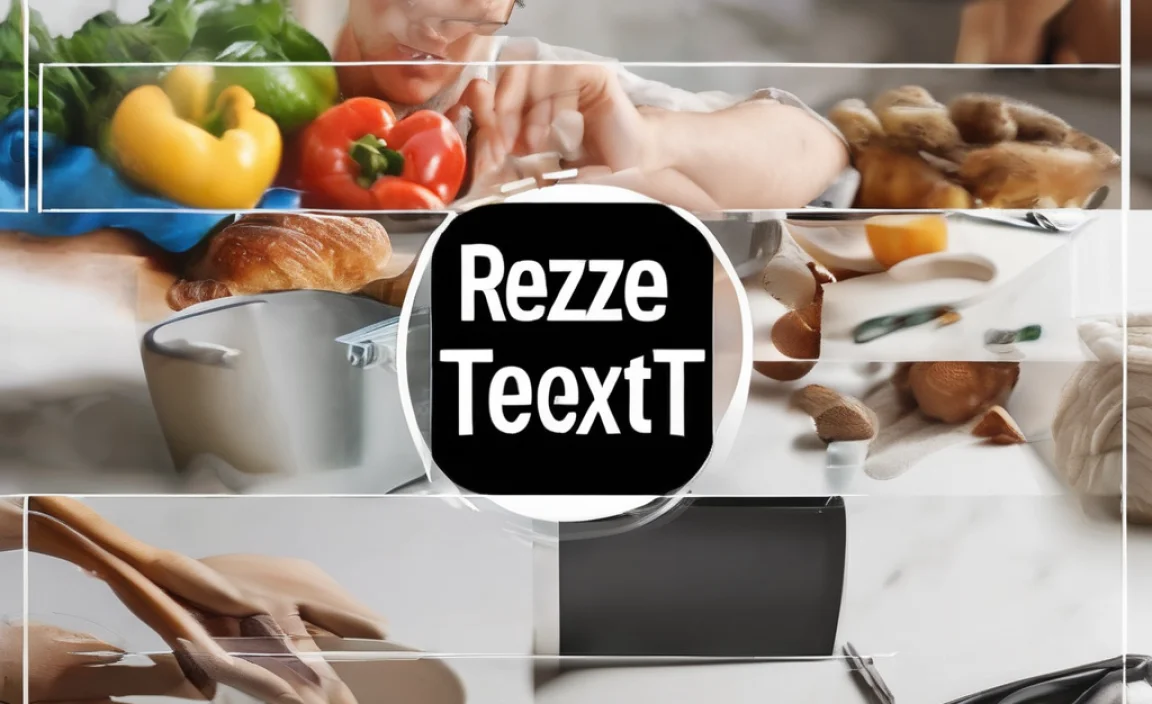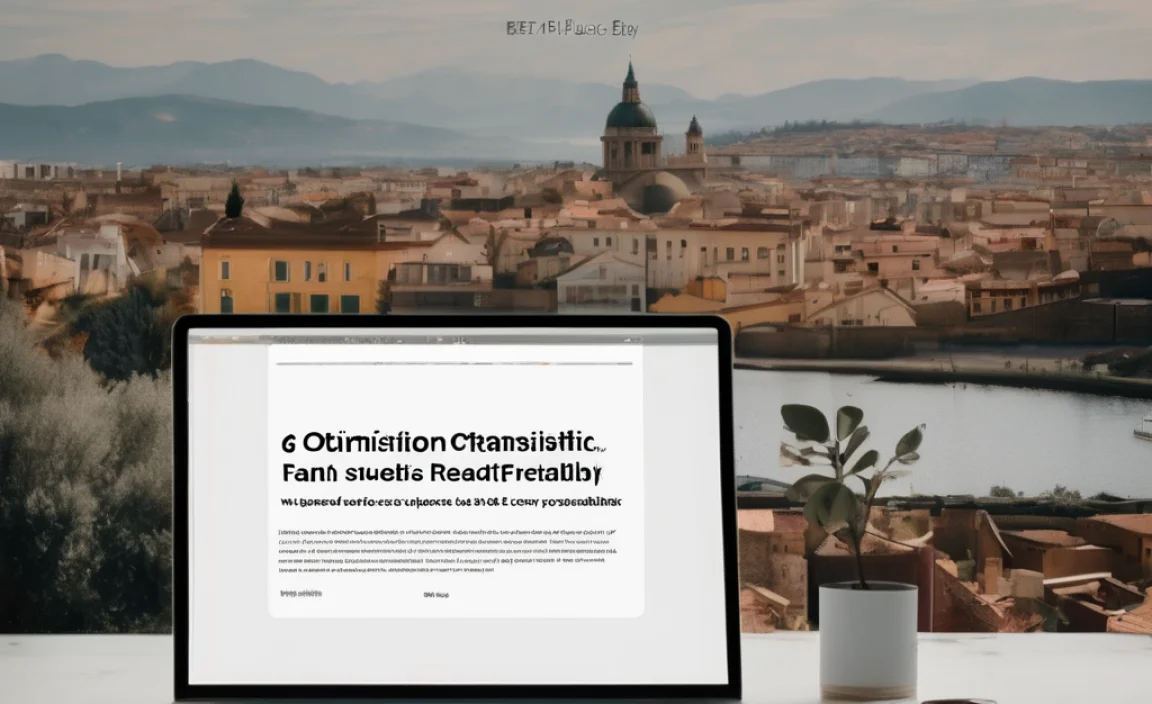Oranienbaum Font offers elegant, versatile design solutions for a polished look. It’s ideal for branding, headlines, and body text when you need a touch of sophistication without sacrificing readability. This guide will show you how to harness its power for effortless design genius.
Finding the perfect font can feel like searching for a needle in a haystack. You want something that looks great, is easy to read, and makes your project stand out. It’s a common challenge for designers, bloggers, and business owners alike. But what if there was a font that promised both style and substance?
Say hello to Oranienbaum Font! It’s a truly special typeface that brings a lot of charm and clarity to any design. Whether you’re creating a website, a brochure, or a social media graphic, Oranienbaum can be your secret weapon.
Ready to unlock effortless design genius? We’ll walk through everything you need to know about this fantastic font, from its best uses to simple tips for making it shine. Let’s dive in!
What is the Oranienbaum Font?
Oranienbaum is a beautiful serif typeface that evokes a sense of classic elegance combined with modern clarity. Designed with readability in mind, it features balanced letterforms, clear ascenders and descenders, and gentle curves. It’s not overly ornate, which makes it incredibly versatile. Think of it as a friendly, sophisticated friend who always knows what to say and how to say it clearly.
This font is a nod to traditional typography but has been carefully crafted for contemporary use. It’s the kind of typeface that can elevate your content, making it feel more professional and trustworthy. It’s perfect for when you want to convey a sense of heritage or timeless style, but still need your text to be accessible and easy on the eyes.
Why Choose Oranienbaum Font for Your Designs?
Choosing the right font is crucial for setting the tone and ensuring your message is received as intended. Oranienbaum shines for several compelling reasons:
Timeless Elegance: Its serif nature lends a classic, refined feel that never goes out of style. It adds a touch of sophistication to any project.
Exceptional Readability: Despite its elegant appearance, Oranienbaum is designed for clarity. The letterforms are well-spaced and distinct, making it easy to read in both large and small sizes. This is vital for keeping your audience engaged.
Versatility: It works beautifully for a wide range of applications. From impactful headlines and impactful subheadings to comfortable body text, it adapts seamlessly.
Branding Power: Oranienbaum can imbue your brand with a sense of quality, tradition, and trustworthiness. It’s a subtle yet powerful way to build brand identity.
Accessibility: Its clear design makes it a good choice for users with visual impairments, contributing to more inclusive design practices. A widely accepted principle in web design is that legible fonts improve accessibility, as outlined by resources from the Web Accessibility Initiative (WAI).
Where to Find and Use Oranienbaum Font
The good news is that Oranienbaum is readily available, making it an accessible choice for everyone.
Getting the Oranienbaum Font
The primary and most reputable source for Oranienbaum font is Google Fonts. Google Fonts offers a vast library of open-source typefaces that are completely free to use for both personal and commercial projects.
1. Visit Google Fonts: Go to the Google Fonts website.
2. Search for Oranienbaum: Use the search bar and type “Oranienbaum”.
3. Select and Download: Once you find it, you can select the style (usually there’s just one classic weight for Oranienbaum, which is often sufficient). Click the “Download all families” button. This will give you a .zip file containing the font files.
4. Install the Font: Extract the .zip file and then install the font on your computer. The process varies slightly depending on your operating system (Windows or macOS), but generally involves a simple double-click and then clicking an “Install” button.
Common Use Cases for Oranienbaum Font
Oranienbaum’s blend of elegance and clarity makes it suitable for numerous design scenarios:
Websites: Excellent for body text on blogs, news sites, and corporate websites. It can also be used for headings if you want a slightly more formal or classic feel.
Branding & Logos: Its sophisticated nature makes it a strong contender for logos, especially for brands in luxury goods, heritage industries, legal services, or publishing.
Print Materials: Perfect for books, magazines, brochures, business cards, and posters where a refined aesthetic is desired.
Invitations & Stationery: Its classic charm lends itself well to wedding invitations, formal event announcements, and personal stationery.
Presentations: Use it for slides in professional or academic presentations to convey authority and clarity.
Packaging: Can add a touch of premium quality to product packaging.
Designing with Oranienbaum: Best Practices
To truly harness the “effortless design genius” of Oranienbaum, follow these practical tips:
Pairing Oranienbaum with Other Fonts
While Oranienbaum is versatile, pairing it effectively with other fonts can elevate your design further. The key is contrast and harmony.
For Display/Headlines:
Sans Serif: Pair with a clean, modern sans-serif font (like Lato, Open Sans, or Montserrat) for a beautiful contrast between classic and contemporary. This pairing works exceptionally well for websites and branding where you want both elegance and directness.
Script or Decorative Fonts: Use sparingly for very specific accents, like a single word or a short, eye-catching phrase, if a highly stylized look is needed. Ensure the script font is also readable.
For Body Text:
If Oranienbaum is your Heading: You can use a highly readable sans-serif font for your main body text to provide a clean, modern foundation.
If Oranienbaum is your Body Text: Consider using a more robust, perhaps slightly bolder, sans-serif for your headings to create a strong visual hierarchy.
Font Pairing Table Example:
| Heading Font | Body Text Font | Best Use Case | Vibe Achieved |
| :—————- | :————- | :———————————————— | :————————————– |
| Oranienbaum (Bold)| Open Sans | Websites, Blogs, Articles | Classic foundation with modern clarity |
| Montserrat | Oranienbaum | Branding, Brochures, Print Materials | Bold, contemporary headlines, elegant text |
| Lato (Regular) | Oranienbaum | Invitations, Personal Stationery, Craft Projects | Refined, charming, and approachable |
| Oranienbaum | Raleway (Light)| Professional Documents, Presentations | Sophisticated and serious |
Adjusting Size and Spacing
Size Matters: Oranienbaum can be used comfortably in sizes ranging from 12px to 16px for body text on screens (depending on screen resolution and line height). For print, 9-11pt is often a good starting point, adjusting as needed for context. For headlines, experiment with much larger sizes (36px+ for digital, 24pt+ for print) to make a strong impact.
Hierarchy: Use font weights if available (Oranienbaum typically comes in one weight suitable for most uses) or, more commonly, use size and capitalization to create a clear hierarchy. Your main headlines should be the largest, followed by subheadings, and then body text.
Line Height (Leading): Good line spacing is essential for readability. For body text, aim for a line height that is about 1.4 to 1.6 times the font size. Too little spacing makes text feel cramped, while too much can make it feel disconnected.
Letter Spacing (Kerning): While Oranienbaum often has good default kerning, for large headlines or specific design needs, you might subtly adjust letter spacing to improve visual flow and aesthetic balance.
Color Considerations
Contrast is Key: Ensure sufficient contrast between your text color and background color for maximum readability. White or light-colored text on a dark background, or dark text on a light background, are generally the safest and most readable combinations.
Color Palette: Oranienbaum pairs well with a wide range of colors. For a classic feel, consider deep blues, greens, burgundies, or grays. For a more modern interpretation, pair it with pastels, muted tones, or even vibrant accent colors used strategically.
Oranienbaum Font vs. Similar Typefaces
It’s helpful to understand how Oranienbaum compares to other popular serif fonts. This helps you make even more informed choices.
| Font Name | Serif Style | Key Characteristics | Best Suited For | Oranienbaum Comparison |
| :————- | :—————– | :———————————————————————————– | :————————————————————————— | :——————————————————————————————— |
| Oranienbaum| Classic Serif | Balanced, clear, elegant, good lowercase. | Body text, headlines, branding, print, web. | — |
| Georgia | Old-Style Serif | Sturdy, friendly, high x-height, distinctive. | Web body text, screen readability. | Oranienbaum is generally more formal and slightly less “sturdy” than Georgia. |
| Merriweather | Serif | Robust, tall x-height, clear, designed for screens. | Web body text, headlines. | Oranienbaum offers a more traditional, less overtly “web-optimized” feel, but still highly readable. |
| Playfair Display | Transitional Serif | High contrast between thick and thin strokes, elegant, fashionable. | Headlines, display text, elegant branding. | Oranienbaum has less dramatic stroke contrast, making it more suitable for continuous reading. |
| Lora | Serif | Contemporary feel, balanced, moderate contrast. | Web body text, moderate headlines, blogs. | Oranienbaum leans more towards classic elegance, while Lora feels a bit more modern. |
Understanding these nuances can help you select the perfect font for your specific project’s needs and desired aesthetic.
Tips for Maximizing Oranienbaum’s Impact
To truly make Oranienbaum work its magic, consider these advanced yet simple tips:
Use Different Weights (if available): While Oranienbaum is often single-weighted, if you find a version with multiple weights (e.g., Light, Regular, Bold), use them to create strong visual hierarchy. A bold header paired with a regular body text is a classic and effective combination.
Embrace White Space: Don’t crowd your Oranienbaum text. Generous white space around your elements allows the font to breathe and makes your content more inviting and easier to digest. This is a fundamental principle in good design.
Context is King: Always consider where your design will be seen. Oranienbaum works wonderfully in print and on screens, but always test your design on the target medium to ensure optimal readability.
* Consider an Accent Font: As mentioned in pairings, using a contrasting sans-serif for buttons, calls-to-action, or navigation can direct user attention effectively while keeping Oranienbaum for the core content.
Frequently Asked Questions About Oranienbaum Font
Is Oranienbaum font free to use?
Yes, when downloaded from Google Fonts, Oranienbaum is completely free for both personal and commercial use. This makes it an excellent and cost-effective choice for many design projects.
What style of font is Oranienbaum?
Oranienbaum is a serif font. Its design features small decorative strokes (serifs) at the ends of the main strokes of letters. It is often described as classic, elegant, and readable.
Can I use Oranienbaum for body text?
Absolutely! Oranienbaum is designed with readability in mind, making it a great choice for body text in both digital and print applications. Its clear letterforms and balanced spacing ensure a comfortable reading experience.
What kind of projects is Oranienbaum best suited for?
Oranienbaum excels in projects requiring a touch of classic elegance and sophistication. This includes websites, branding, logos, books, magazines, invitations, and any design where a refined, timeless feel is desired.
How does Oranienbaum compare to sans-serif fonts?
Serif fonts like Oranienbaum have small strokes (serifs) that can help guide the eye, often making them feel more traditional and established. Sans-serif fonts lack these strokes and generally appear more modern, clean, and minimalist. Oranienbaum provides a classic contrast to modern sans-serif designs.
Where can I download Oranienbaum font?
The most reliable and recommended place to download Oranienbaum font is Google Fonts. You can find it by searching for “Oranienbaum” on their website and downloading it for free.
Conclusion: Embrace Effortless Elegance
Oranienbaum font is more than just a collection of letters; it’s a design tool that brings effortless elegance and exceptional clarity to your projects. Its classic serif style, coupled with its superb readability, makes it a versatile choice for everything from important website copy to sophisticated branding.
By understanding its strengths, learning how to pair it effectively, and applying simple design principles like proper spacing and contrast, you can unlock its full potential. Whether you’re a seasoned designer looking for a reliable workhorse or a beginner exploring the world of typography, Oranienbaum offers a path to polished, professional results without the struggle.
So, next time you’re faced with a blank canvas, consider reaching for the Oranienbaum font. Let its timeless charm guide your design and help you create something truly beautiful and impactful. Happy designing!








